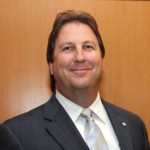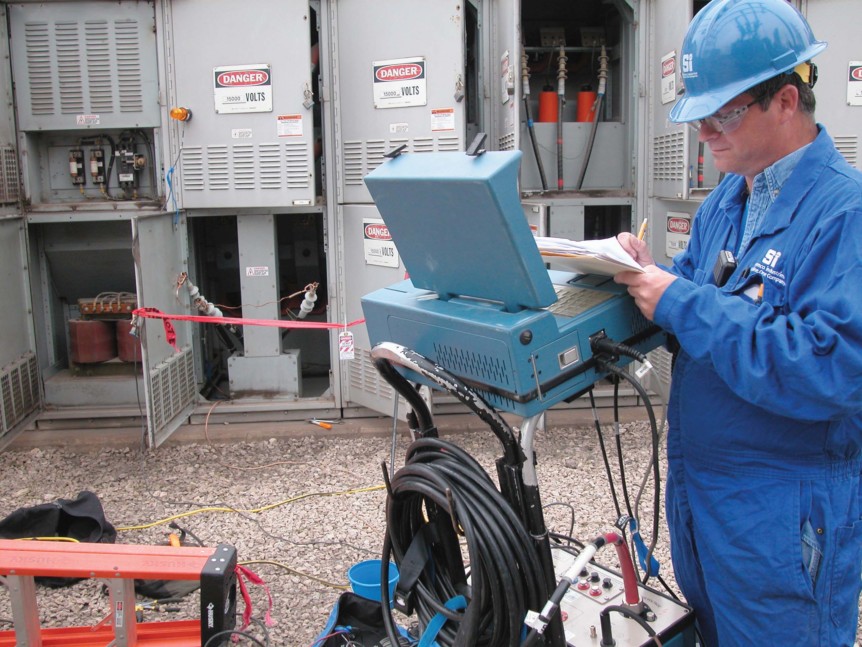The 2021 edition of the NFPA 70E is almost upon us. In June 2020, it should be approved at the technical meeting during the NFPA Conference and Expo, and the Standards Council will issue the standard soon thereafter, likely in August 2020. A pdf version of the standard will likely be released in September, with a printed copy available in late September or early October 2020.
Be aware: After the standard is approved by the Standards Council, the effective date will be set and goes into effect, even though you can’t purchase a copy until later. The effective date will likely be in August 2020, and the new 2021 edition will supersede all previous editions. Because this is a work practices document and not an installation code, previous standards are not grandfathered. You will need to comply with the 2021 edition after the effective date.
Once the edition is approved, a no-charge copy will online at www.nfpa.org/70e, but the free copy cannot be downloaded.
This will probably be the last cycle of major changes to NFPA 70E. For the last three cycles, the committee has tried to make 70E better organized and easier to understand for field technicians, and we have clarified sections or requirements that could be misinterpreted. The standard is now entering more like a maintenance phase where we will continue to improve it, but the huge reorganizations performed in the past are pretty much finished. The newest edition should be well-organized, easier to apply in the field, and hopefully more understandable to those it is intended for….the electrical worker.
As an example of the number of changes this cycle, the committee received 344 Public Inputs and created 85 First Revisions. For the second draft meeting, 115 Public Comments were submitted and 46 Second Revisions were created. This is quite a workload for the committee, as each Public Input and each Public Comment is discussed — revised if needed — and then balloted.
We always recommend that users of 70E review the definitions in Article 100 first. If the meaning of a word is not clear or users do not understand, it is very likely to be misapplied. That is exactly what we do not want to see happen, so the Committee reviews the definitions and tries to make them as clear as possible to the typical field worker.
Sometimes, the name of something we refer to evolves over time. One example is the term “sock hood.” Previous cycles used that phrase to clarify what was being discussed in the standard. In the 2021 edition, sock hood is no longer used; most people are familiar with a balaclava, so that’s the term that is now used. The standard constantly evolves to keep up with terminology and knowledge. A new Informational Note was added to the definition of a balaclava:
Informational Note: Some balaclava designs protect the neck and head area, except for the eyes, while others leave the eyes and nose area unprotected.
This note was added because different workers prefer different designs. Some choice is allowed so workers can be comfortable while they perform a task. The note also points out that some designs provide more protection than others.
Many of the definitions are taken directly from NFPA 70, National Electrical Code (NEC), although the committee has the authorization to modify a definition if needed. When the definition language is taken straight from the NEC, its wording is often slightly modified for use in 70E. For example, the definition for “Conductor, Covered” used to state:
A conductor encased within material of composition or thickness that is not recognized by this Code, as electrical insulation. [70:100].
NFPA 70E is a standard, not a code, so that definition and a number of other definitions were revised to state:
A conductor encased within material of composition or thickness that is not recognized by NFPA 70, National Electrical Code as electrical insulation. [70:100].
This clarifies where the definition originated and that 70E is not a code.
One important revision was made to the term “Electrically Safe Work Condition.” There was some issue that the definition was not in line with ANSI/AIHA Z10, which 70E referred to as part of the Hierarchy of Risk Control Methods. To clarify what the Committee intended, the Informational Note was revised to state:
Informational Note: An electrically safe work condition is not a procedure, it is a state wherein all hazardous electrical conductors or circuit parts to which a worker might be exposed are maintained in a zero-energy de-energized state for the purpose of temporarily eliminating electrical hazards for the period of time for which the state is maintained.
The committee statement explains:
Language is added to clarify that elimination is achieved by disconnecting and isolating from energy sources all electrical conductors or circuit parts to which a worker might be exposed in the area where work is to take place. Additionally, it is clarified that this de-energization is a temporary state and exists only during the period for which the electrically safe work condition state is maintained.
This brings up another important point for 70E users: They should take the time to go to the NFPA website and read the committee statements for all of the revisions, as the statements will clarify misunderstandings workers may have about the way a phrase or section is written. Most people will not take the time to do this and then wonder what it really means, or worse yet, they will read whatever they want into it. Both situations are unsafe.
Another Informational Note was added to the definition of “Fault Current, Available,” which we consider pretty important, and a third Informational Note was added to provide clarity:
Informational Note No. 3: The available fault current varies at different locations within the system due to the location of sources and system impedances.”
This clarifies that available fault current is not one single value, but can vary within the power system.
Summary
Studying definitions is not the reason workers and supervisors use 70E, but the definitions set the foundation for everything that follows. Knowing what a word or term really means, instead of using your own personal definition, can make the difference between a safely performed task and an incident. The committee statements are another valuable source of information most people do not utilize. We are required to write a statement on every First or Second Revision we pass so the users of 70E have a better understanding of the intent. It’s easier to ask someone’s opinion, especially if they are considered an expert, but it is much better to gather the information yourself. You hear it a lot: Knowledge is Power.
Be safe out there.
Ron Widup and Jim White are NETA’s representatives to NFPA Technical Committee 70E, Electrical Safety Requirements for Employee Workplaces. Both gentlemen are employed by Shermco Industries in Dallas, Texas, a NETA Accredited Company.
 Ron Widup, Senior Advisor, Technical Services and Vice Chairman of the Board of Directors, has been with Shermco Industries since 1983. He is a member of Technical Committee on NFPA 70E, Electrical Safety in the Workplace; a Principal Member of National Electrical Code (NFPA 70) Code Panel 11; a Principal Member of the Technical Committee on NFPA 790, Standard for Competency of Third-Party Evaluation Bodies; a Principal Member of the Technical Committee on NFPA 791, Recommended Practice and Procedures for Unlabeled Electrical Equipment Evaluation; a member of the Technical Committee on NFPA 70B, Recommended Practice for Electrical Equipment Maintenance, and Vice Chair for IEEE Std. 3007.3, Recommended Practice for Electrical Safety in Industrial and Commercial Power Systems. Ron also serves on NETA’s board of directors and Standards Review Council. He is a NETA Certified Level 4 Senior Test Technician, a State of Texas Journeyman Electrician, an IEEE Standards Association member, an Inspector Member of the International Association of Electrical Inspectors, and an NFPA Certified Electrical Safety Compliance Professional (CESCP).
Ron Widup, Senior Advisor, Technical Services and Vice Chairman of the Board of Directors, has been with Shermco Industries since 1983. He is a member of Technical Committee on NFPA 70E, Electrical Safety in the Workplace; a Principal Member of National Electrical Code (NFPA 70) Code Panel 11; a Principal Member of the Technical Committee on NFPA 790, Standard for Competency of Third-Party Evaluation Bodies; a Principal Member of the Technical Committee on NFPA 791, Recommended Practice and Procedures for Unlabeled Electrical Equipment Evaluation; a member of the Technical Committee on NFPA 70B, Recommended Practice for Electrical Equipment Maintenance, and Vice Chair for IEEE Std. 3007.3, Recommended Practice for Electrical Safety in Industrial and Commercial Power Systems. Ron also serves on NETA’s board of directors and Standards Review Council. He is a NETA Certified Level 4 Senior Test Technician, a State of Texas Journeyman Electrician, an IEEE Standards Association member, an Inspector Member of the International Association of Electrical Inspectors, and an NFPA Certified Electrical Safety Compliance Professional (CESCP).
 James (Jim) R. White, Vice President of Training Services, has worked for Shermco Industries since 2001. He is a NFPA Certified Electrical Safety Compliance Professional and a NETA Level 4 Senior Technician. Jim is NETA’s principal member on NFPA Technical Committee NFPA 70E®, Electrical Safety in the Workplace; NETA’s principal representative on National Electrical Code® Code-Making Panel (CMP) 13; and represents NETA on ASTM International Technical Committee F18, Electrical Protective Equipment for Workers. Jim is Shermco Industries’ principal member on NFPA Technical Committee for NFPA 70B, Recommended Practice for Electrical Equipment Maintenance and represents AWEA on the ANSI/ISEA Standard 203, Secondary Single-Use Flame Resistant Protective Clothing for Use Over Primary Flame Resistant Protective Clothing. An IEEE Senior Member, Jim was Chairman of the IEEE Electrical Safety Workshop in 2008 and is currently Vice Chair for the IEEE IAS/PCIC Safety Subcommittee.
James (Jim) R. White, Vice President of Training Services, has worked for Shermco Industries since 2001. He is a NFPA Certified Electrical Safety Compliance Professional and a NETA Level 4 Senior Technician. Jim is NETA’s principal member on NFPA Technical Committee NFPA 70E®, Electrical Safety in the Workplace; NETA’s principal representative on National Electrical Code® Code-Making Panel (CMP) 13; and represents NETA on ASTM International Technical Committee F18, Electrical Protective Equipment for Workers. Jim is Shermco Industries’ principal member on NFPA Technical Committee for NFPA 70B, Recommended Practice for Electrical Equipment Maintenance and represents AWEA on the ANSI/ISEA Standard 203, Secondary Single-Use Flame Resistant Protective Clothing for Use Over Primary Flame Resistant Protective Clothing. An IEEE Senior Member, Jim was Chairman of the IEEE Electrical Safety Workshop in 2008 and is currently Vice Chair for the IEEE IAS/PCIC Safety Subcommittee.
